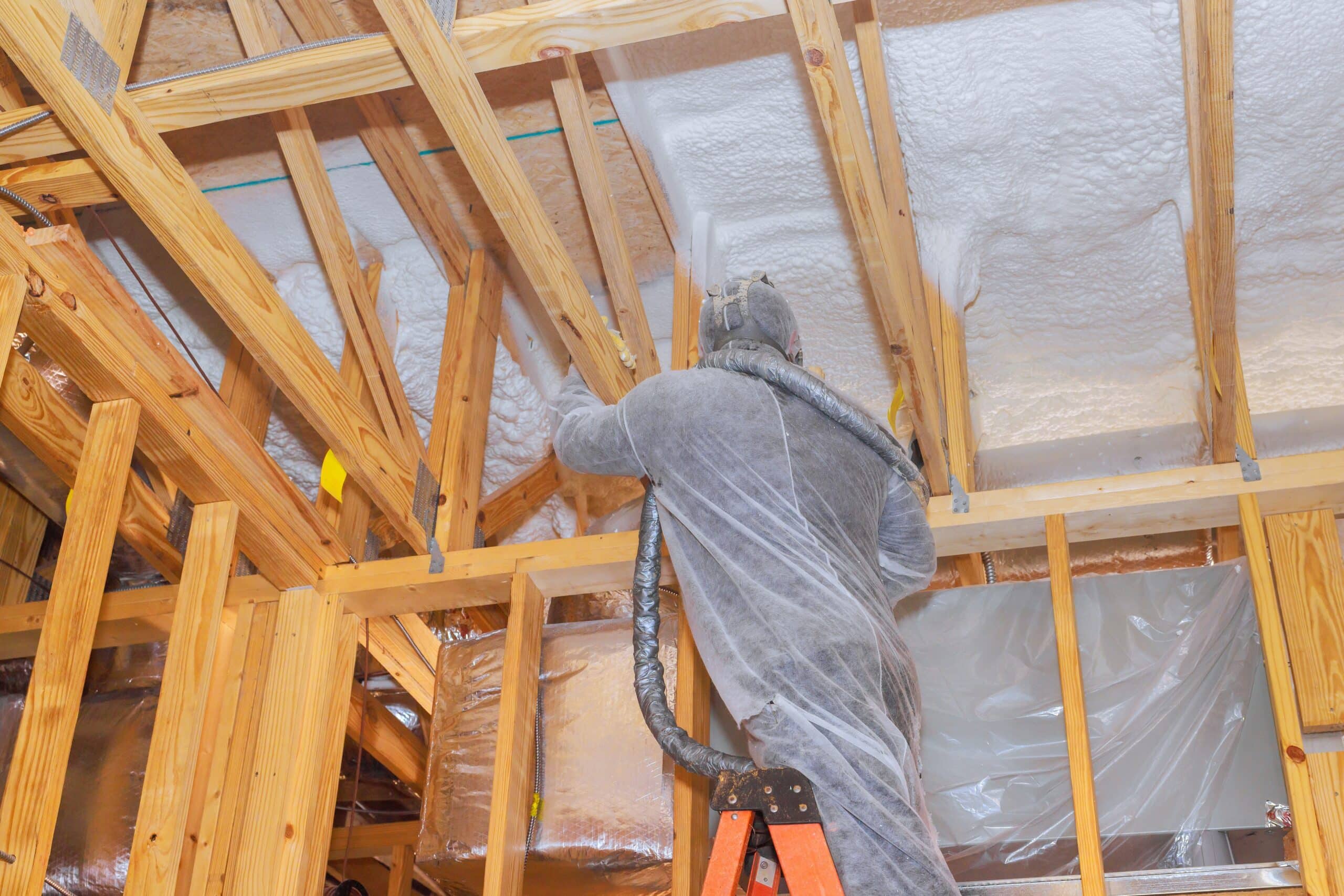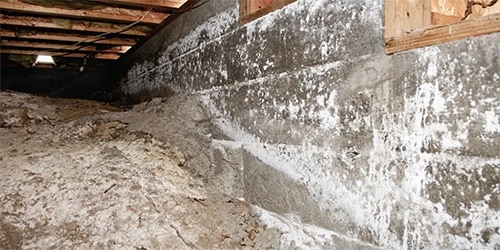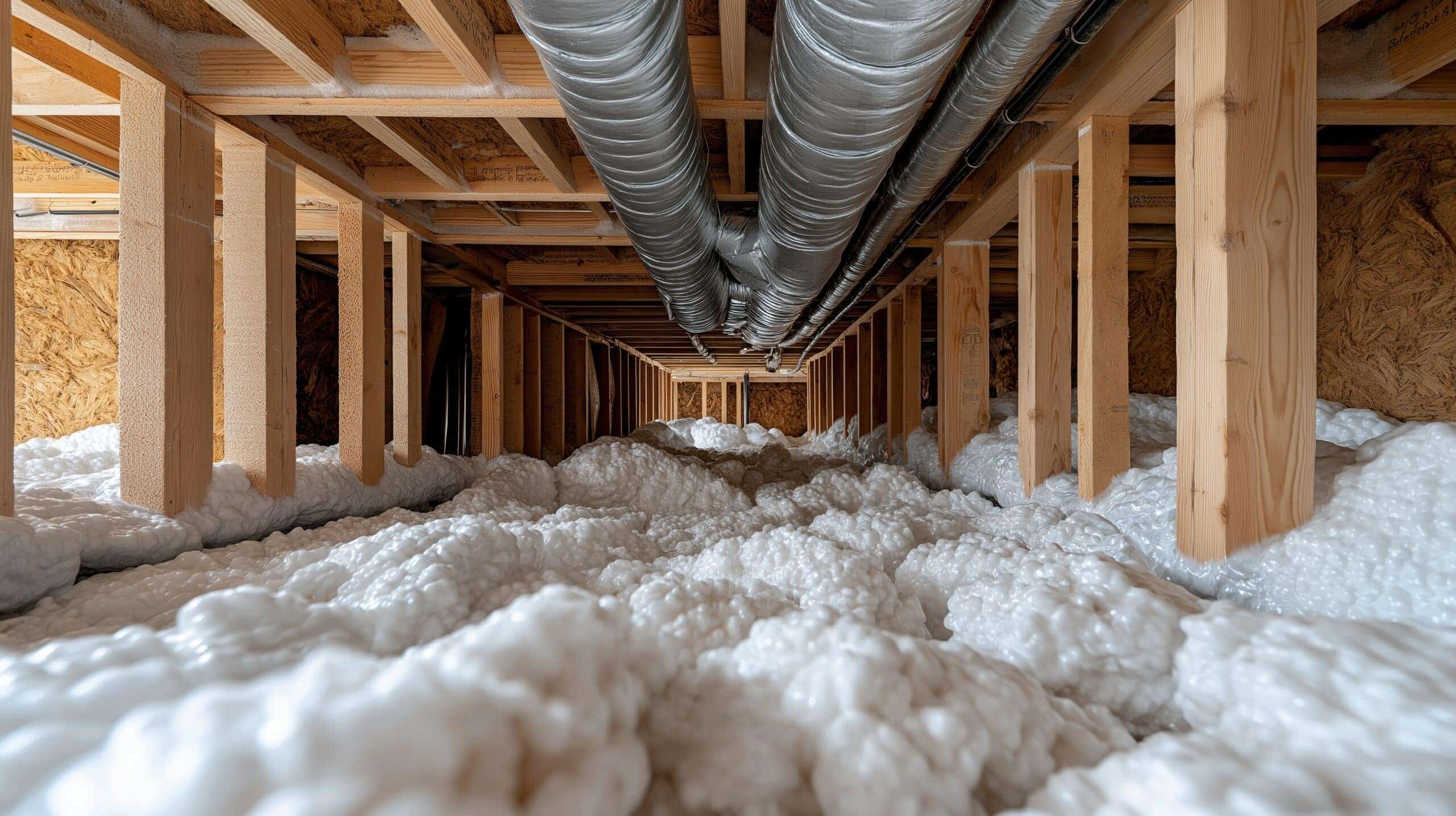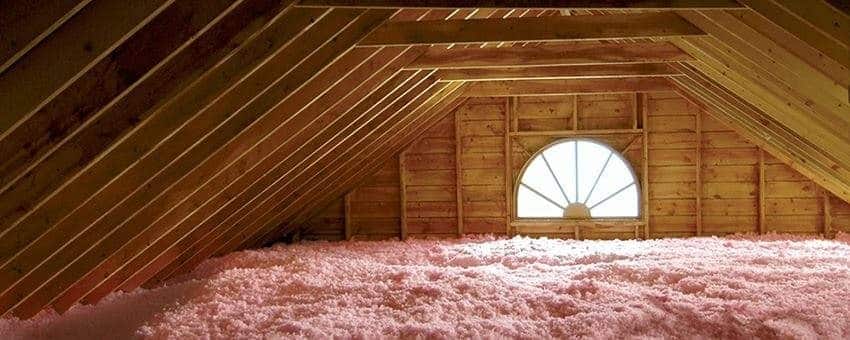
Introduction: Affordable Insulation for Smart Homeowners
If you’re a Raleigh homeowner looking for affordable insulation options that don’t compromise on performance, fiberglass insulation might be your best bet. Known for its excellent thermal performance, fire resistance, and budget-friendly pricing, fiberglass remains a top contender in the home energy efficiency space. At Triangle Radiant Barrier, we often recommend fiberglass as a cost-effective solution that works well in North Carolina’s varied climate.
This blog will explore the many advantages of fiberglass insulation, compare it with spray foam, break down the installation process, and address important considerations like maintenance and material types. Our goal? To help you make an informed decision—especially if you’re balancing energy savings with an eye on the budget.
What is Fiberglass Insulation and Why Choose It?
Fiberglass insulation is made of extremely fine glass fibers that trap air, slowing the transfer of heat. It is widely used in walls, attics, basements, and ceilings due to its ease of installation and cost-effectiveness. Compared to other options, it offers one of the best balances between performance and price.
Why Budget-Conscious Homeowners Prefer It
- Low Cost: Among the most affordable insulation options available.
- High Thermal Performance: Great at maintaining indoor temperatures.
- Fire Resistant: Naturally non-combustible, adding a layer of safety.
- Recyclable: Many fiberglass products include recycled content.
- Moisture Resistant: When properly installed, it resists mold and mildew.
Fiberglass Insulation Raleigh: Why It’s Ideal for Local Homes
Climate Compatibility
Raleigh experiences hot, humid summers and cool winters. Fiberglass performs exceptionally well in this environment, providing year-round thermal comfort without inflating energy bills.
Local Building Codes and Compliance
In North Carolina, fiberglass insulation meets all residential building code requirements, including R-value specifications for walls, ceilings, and floors. It’s also compatible with both older and newer home construction styles found in Raleigh neighborhoods.
Market Availability
Fiberglass insulation is easy to find and quick to install, which reduces both wait times and labor costs—key considerations for budget-conscious homeowners.
Choosing fiberglass insulation Raleigh experts ensures proper fit and finish. Professionals like those at Triangle Radiant Barrier can guide you to optimal choices based on your home’s layout and your personal energy goals.
Installation Process: What Homeowners Should Expect
Installing fiberglass insulation involves several key steps. While DIY is possible for some, professional installation ensures better coverage and minimizes risks like air leaks or compression, which can reduce effectiveness.
Step-by-Step Installation Overview
Step | Details |
1. Site Inspection | Assessment of existing insulation and areas of improvement |
2. Material Selection | Choosing between batts, rolls, or loose-fill fiberglass |
3. Preparation | Sealing gaps, removing old insulation, prepping surfaces |
4. Installation | Cutting and fitting fiberglass into cavities or blowing loose-fill material |
5. Inspection | Ensuring R-value compliance and complete coverage |
Professional vs DIY
- Professional Pros: Better air sealing, safer installation, and code compliance.
- DIY Risks: Exposure to fibers, improper R-values, and energy inefficiency.
Types of Fiberglass Insulation Materials
Fiberglass comes in several forms, and your choice will depend on your home’s structure, goals, and budget.
Main Types of Fiberglass Insulation
- Batt Insulation: Pre-cut panels ideal for walls and ceilings.
- Roll Insulation: Similar to batts but offered in long rolls, great for large spaces.
- Loose-Fill (Blown-In): Ideal for attics and hard-to-reach areas, providing great coverage.
- Rigid Boards: Used in specialized applications for higher R-values.
Comparing Material Types for Value
Type | Best Use | Cost | Ease of Installation |
Batts | Walls, floors, ceilings | $$ | Medium |
Rolls | Attics, long open spaces | $ | Easy |
Loose-Fill | Attics, retrofits | $$$ | Requires blower machine |
Rigid Boards | Basements, exteriors | $$$$ | Professional only |
Thermal Performance: Energy Savings That Add Up
Thermal performance refers to an insulation material’s ability to resist heat flow, commonly expressed as an R-value. The higher the R-value, the better the insulation.
Fiberglass Insulation R-Value Range
- Walls: R-13 to R-21
- Attics: R-30 to R-49
- Floors: R-19 to R-30
Energy Savings
A well-insulated home can save up to 15% on heating and cooling costs annually. The affordability and wide availability of fiberglass make it easier to insulate the entire house at a fraction of the cost of spray foam.
Fire Resistance and Safety Features
Fiberglass insulation is naturally non-combustible, making it a fire-safe option without the need for additional chemical treatments.
Benefits of Fire Resistance
- Slows the spread of flames
- Provides crucial minutes for evacuation
- Meets local fire codes without additives
- Won’t burn, melt, or release toxic fumes
This feature adds an extra layer of protection to homes, particularly in regions prone to electrical issues or wildfires.
Maintenance and Longevity: How to Keep It Performing
Fiberglass insulation is known for its low maintenance requirements and long lifespan.
Maintenance Tips
- Visual Inspection: Check annually for moisture or pest damage.
- Seal Air Leaks: Use caulk or spray foam in gaps around fixtures.
- Replace When Wet: Moisture can reduce R-value and lead to mold.
- Avoid Compression: Ensure insulation hasn’t shifted or been compressed.
Longevity
Fiberglass can last over 50 years if kept dry and undisturbed. However, it’s advisable to have a professional inspection every few years to ensure performance hasn’t degraded.
Triangle Radiant Barrier provides long-term care plans for both Spray Foam & Fiberglass Insulation, making it easy to protect your investment year after year.
Spray Foam vs. Fiberglass: A Budget Comparison
When selecting insulation, most homeowners compare spray foam with fiberglass. Both have their place, but the difference in upfront costs often makes fiberglass the go-to option for families on a budget.
Cost Comparison Table
Feature | Fiberglass | Spray Foam |
Cost per Sq Ft | $0.40 – $1.00 | $1.50 – $3.00 |
R-Value per Inch | 2.9 – 3.8 | 6 – 7 |
Fire Resistance | Excellent | Good (requires additives) |
Moisture Resistance | Moderate | High |
Installation Time | 1–2 days | 2–3 days |
Lifespan | 50+ years | 80+ years |
Why Fiberglass is the Budget Winner
Fiberglass insulation continues to be one of the most affordable insulation options for homeowners looking to improve energy efficiency without breaking the bank. From high thermal performance and fire resistance to low maintenance and a long lifespan, fiberglass offers value on all fronts.
For Raleigh homeowners, fiberglass is particularly appealing due to its availability, code compliance, and performance in local weather conditions.
Whether you’re insulating a new build or retrofitting an older property, Triangle Radiant Barrier can help you choose between Spray Foam & Fiberglass Insulation to find the perfect balance of cost, comfort, and energy efficiency.
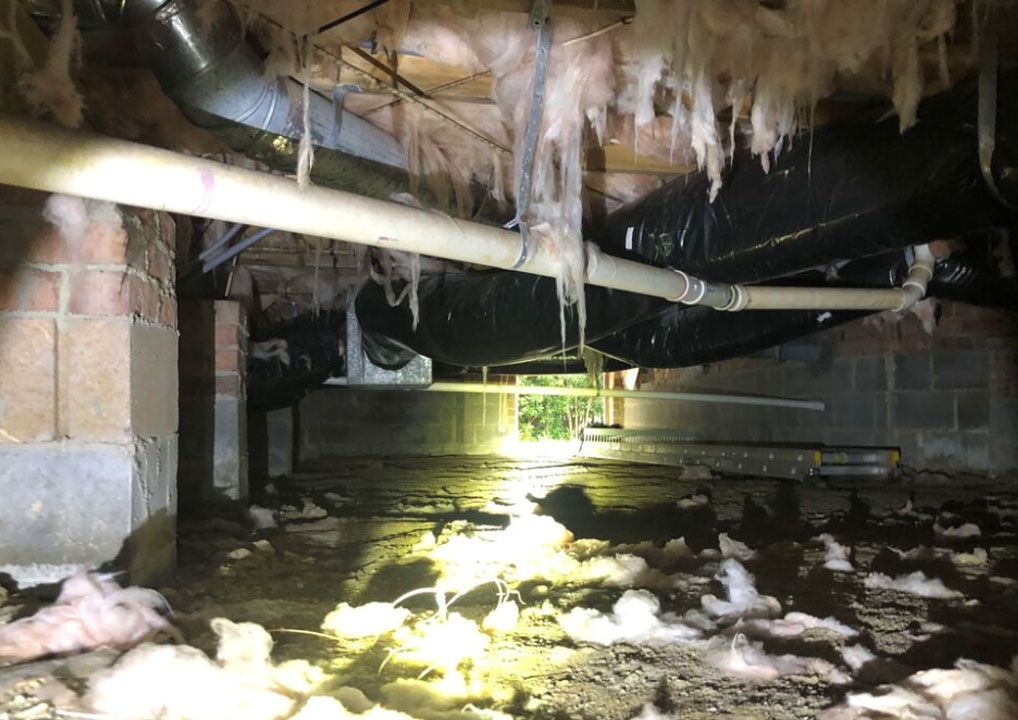
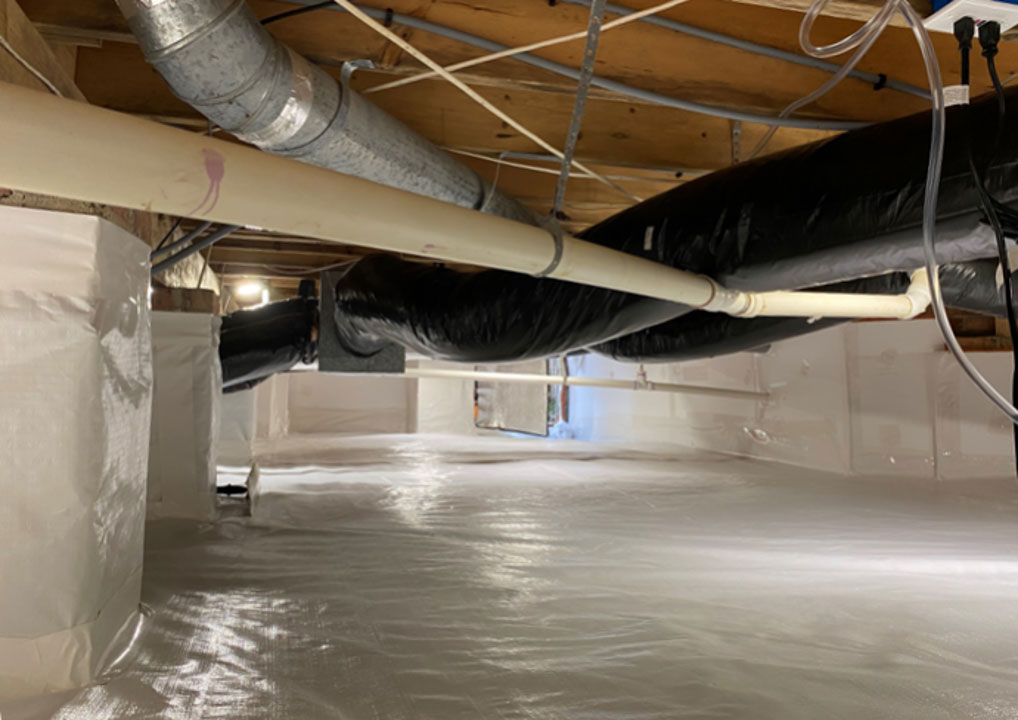
FAQs (Frequently Asked Questions):
How long does fiberglass insulation last?
Fiberglass insulation can last over 50 years if installed correctly and kept dry and free of pests or damage.
Is fiberglass insulation safe for my family?
Yes. When professionally installed and sealed, it poses no health risk. It’s also fire-resistant and contains no harmful chemicals.
Can fiberglass insulation be used with other insulation types?
Absolutely. It’s common to combine fiberglass with spray foam or rigid boards for optimal thermal performance in different parts of the home.

